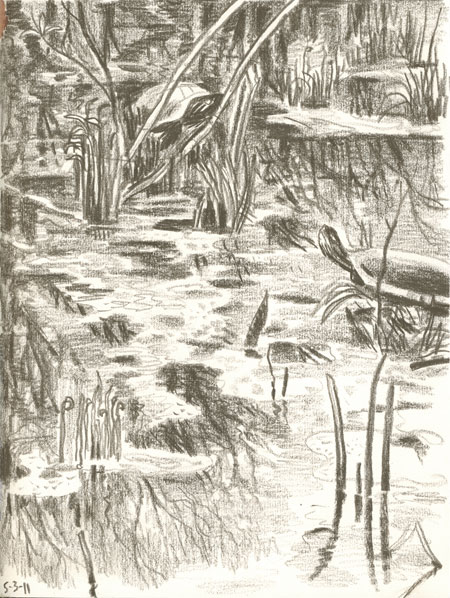I drew these little purple flowers (Glechoma hederacea) yesterday during a brief stop at the park below the South Natick dam. It's common name is "Creeping Charlie" or "Gill-Over-The Ground" (I rather like Creeping Charlie). You can tell it's in the Mint Family (Lamiaceae) of plants because of the square stems and the labiate inflorescence. Creeping Charlie is a successful weed; this plant was springing from a crevice in the stone retaining wall. The river rushes by just a few feet below. You can see the foam and bubbles.
I'm still adjusting to the speed at which this season progresses. I've seen new families of geese and robins on their nests. The birds are very busy. My cat brought home a few reluctant bunnies and the mosquitoes are hungry at all hours.
Let's just call it Summer and get it over with!
Pretty soon it'll all look like the jungle plants I sketches at the greenhouse last weekend!
Have a peaceful Memorial Day weekend everybody and… Don't forget to say a prayer for the safe return of our soldiers.
 |
| "Bird of Paradise" |






















